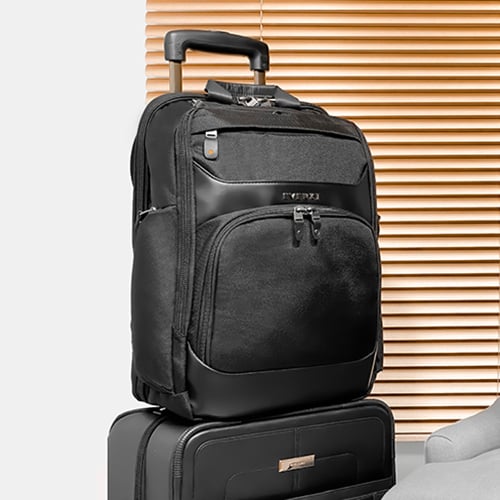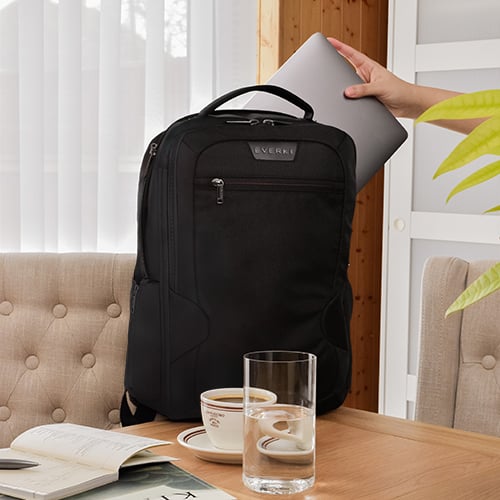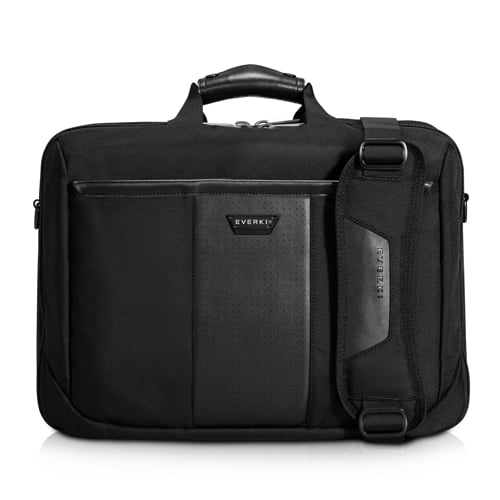Asia Pacific
How to Adjust a Backpack Correctly to Prevent Pain
Summary:
-
Carrying your backpack incorrectly can lead to daily pain.
-
Making simple adjustments to the straps and weight can greatly improve comfort.
-
Everki backpacks are designed to support better posture and reduce strain.
-
Choose Everki to enjoy all-day comfort and smart, ergonomic design.
Tired of that nagging ache after carrying your backpack all day? The culprit might not be what's inside, but how the bag itself sits on your back.
You're not alone. A study in the Journal of PubMed found that improperly worn backpacks are a significant cause of back pain. The good news is that a solution is often just a few simple adjustments away.
This guide will walk you through the correct way to adjust your backpack, turning discomfort into all-day support and improving your posture along the way.
A Step-by-Step Guide to Adjusting Your Backpack Correctly
Carrying a laptop backpack that isn’t properly adjusted can lead to discomfort and long-term pain. By making a few simple tweaks, you can significantly improve comfort and reduce strain during daily use.
1. Loosen All Straps Before Putting on the Backpack
When: Always start before wearing your backpack.
How: Loosen the hip belt, shoulder straps, load lifters, and chest strap completely to create a neutral starting point. This allows you to customize the fit precisely without any pre-tension.
Backpacks come with an easy-adjust strap management system that lets you quickly loosen or tighten straps without hassle, helping you find the perfect fit every time.
2. Position and Tighten the Hip Belt Properly
When: After putting the backpack on but before adjusting the shoulder straps.
How: Position the hip belt so it sits snugly on your hip bones, ideally at the top of your hips. Buckle and tighten it firmly to transfer most of the backpack’s weight to your hips, relieving shoulder strain.
These models feature padded hip belts designed for comfort and efficient weight transfer, reducing fatigue during long periods of wear.
3. Adjust Shoulder Straps for a Snug Fit
When: After securing the hip belt.
How: Pull the shoulder straps down and back to bring the backpack closer to your body. The straps should contour your shoulders without digging in or leaving gaps, distributing weight evenly across your upper back.
As backpacks have padded, ergonomic shoulder straps with adjustable buckles that allow precise fitting for all body types, enhancing comfort and support.
4. Tighten the Load Lifters at a 45-Degree Angle
When: After adjusting shoulder straps.
How: Load lifters are small straps connecting the top of the backpack to the shoulder straps. Tighten them to pull the top of the backpack closer to your body at about a 45-degree angle. This shifts weight toward your hips and improves balance.
When you choose the right laptop backpack, you benefit from built-in load lifters that help stabilize the pack and optimize weight distribution, making it easier to carry heavy loads comfortably.
5. Fasten and Adjust the Chest (Sternum) Strap
When: After shoulder straps and load lifters are adjusted.
How: Clip the chest strap across your chest and tighten it so it stabilizes the shoulder straps without restricting breathing. This prevents the straps from slipping and reduces shoulder strain.
Backpacks include adjustable sternum straps designed for stability and comfort, helping keep the pack secure during movement.
6. Distribute Weight Evenly Inside the Backpack
When: Before putting on the backpack.
How: Pack heavier items close to your back and centered to maintain your natural balance. Ensure the weight is balanced side-to-side to avoid leaning or strain. Avoid overloading the backpack.
It has well-organized compartments and adjustable laptop pockets make it easy to pack efficiently, keeping weight balanced and close to your body for optimal comfort.
7. Always Wear Both Shoulder Straps
When: Every time you wear your backpack.
How: Use both straps to evenly distribute weight. Avoid slinging the backpack over one shoulder, which causes muscle strain and poor posture.
Everki’s dual-strap design with padded, contoured straps encourages proper use and balanced carrying, reducing fatigue.
8. Maintain Good Posture While Carrying
When: Continuously while wearing the backpack.
How: Stand tall with shoulders back and engage your core muscles. Good posture supports your spine and reduces strain from carrying a load.
The ergonomic design of backpacks complements good posture by keeping the load close and balanced, making it easier to maintain proper alignment.
9. Take Regular Breaks When Carrying Heavy Loads
When: During extended periods of backpack use.
How: Remove the backpack periodically to rest your muscles and readjust your posture. This helps prevent fatigue and discomfort.
Lightweight backpacks reduce overall load, and features like trolley handle pass-through allow you to switch to wheeled transport when needed.
10. Consider a Rolling Backpack for Heavy Loads
When: When carrying heavy or bulky items for long distances.
How: Use a rolling backpack to avoid strain on your back and shoulders by rolling instead of carrying.
Rolling backpacks with smooth wheels and trolley handle pass-throughs, combining ergonomic backpack features with convenient mobility for heavy loads
Conclusion:
Taking a moment to adjust your backpack isn't just a small tweak—it's the key to unlocking a comfortable, pain-free experience. By following these steps to properly balance the load, you protect your back, improve your posture, and make every journey easier.
Ready to feel the difference an expertly designed bag can make? Explore Everki’s collection of ergonomic backpacks, engineered for ultimate support and organization
Explore the Everki collection today and feel the difference with every step.
FAQs:
How do I adjust my backpack to stop back pain?
You can adjust your backpack to stop pain by tightening the hip belt to move weight to your hips and adjusting the shoulder straps so the bag sits close to your back.
What is the correct way to wear a backpack to avoid pain?
You can wear a backpack the correct way by using both shoulder straps, securing the chest strap, and placing the backpack high on your back just above the hips.
How tight should backpack shoulder straps be?
You should tighten backpack shoulder straps so they fit snugly without digging into your shoulders or causing discomfort, keeping the bag close to your body.
Where should a backpack sit on your back for best support?
You should position your backpack so it sits high on your back, with the bottom resting just above your hips for the best support and balance.
Why does my backpack hurt my shoulders/back?
Your backpack might hurt your shoulders or back because it is too heavy, poorly adjusted, or not packed evenly, which puts extra strain on your muscles.
How can I make my backpack feel lighter through adjustment?
You can make your backpack feel lighter by tightening the hip belt, adjusting the shoulder and load-lifter straps, and placing heavy items close to your back.







